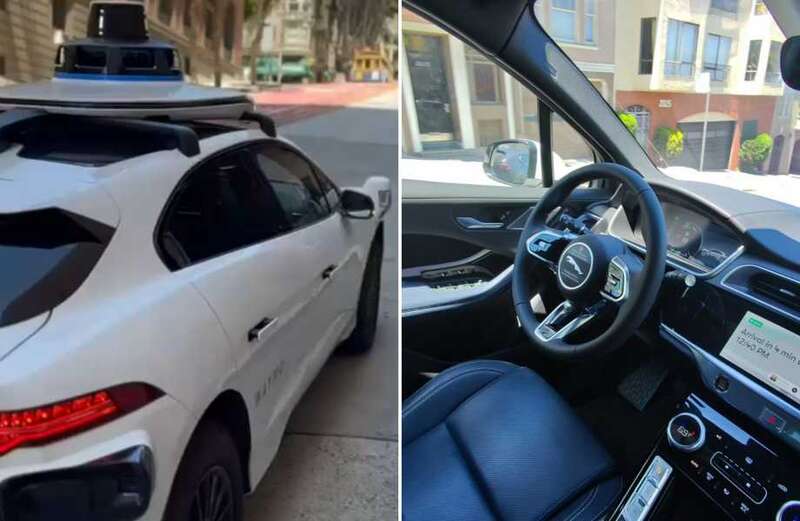EVERYONE is wondering whether their jobs will be taken over by robots or AI.
While it may feel like a while off yet, there are actually robo-taxis already on the street in some parts of the world.


Waymo - owned by Google parent Alphabet - is a self-driving ride hailing service currently operating in a handful of US states.
And when we say self-driving, we mean with no human sat behind the wheel at all.
US traffic safety regulators recently launched an investigation into the company, following a number of incidents and collisions with stationary objects.
 Selfish drivers mount pavement outside family homes putting pedestrians at risk
Selfish drivers mount pavement outside family homes putting pedestrians at risk
Nevertheless, on a recent trip to San Francisco, one of four areas where it operates, we took Waymo for a spin to see whether this is the future of taxis.
HAIL YOUR RIDE
Waymo works much like an Uber app, you set your location and destination, then wait for a ride to be accepted.
But the service isn't available to everyone immediately, there's currently a waiting list so if you're curious to try, sign up well in advance.
Waymo is only allowed to operate on public roads in certain areas, as such they don't drive on freeways yet, though testing is underway in Phoenix.
They're approved to operate on roads with a speed limit of no more than 65 mph - due to inner-city speed limits you're looking at 45 mph realistically.
My first gripe when hailing a ride is the length of time I had to wait - 11 minutes.
I'm used to much shorter waiting times with a traditional taxi or Uber.
This is no doubt due to the limited number of Waymo cars on the road, with only 250 registered in San Francisco (and not all of them operating at the same time).
My other initial issue was price too.
Considering there is no human driver to pay, Waymo is quite a bit more expensive than an Uber.
 Top ten reasons learners fail their driving test revealed by the DVSA
Top ten reasons learners fail their driving test revealed by the DVSA
I don't know what sort of factors determine price - Uber uses things like demand in a busy area for example - but one Waymo ride was about $10 more than an Uber.
People will always prefer the cheapest option, and Waymo is not that currently
Of course, there is no expectation of tips with a Waymo so that's one saving.
When the car does arrive, you need to unlock the doors via the app, otherwise anyone could jump in obviously.
ON THE ROAD
Waymo uses Jaguar I-PACE electric SUVs.
You're not allowed to sit in the driver's seat - and are strictly told not to touch anything on the driver's side too.
Once you're in, buckle up (an eerie voice assistant will tell you off if you don't) and tap the drive button on the dashboard.
As the Waymo sets off, it's quite surreal to see the steering wheel move on its own with no-one behind it.
My first feeling was a weird mix of curiosity, excitement and fear, as I winced at every possible collision moving before my eyes.
It was particularly terrifying braking to a stop at the top of San Francisco's many steep hills.
You get a lot of stares from pedestrians who realise there isn't anyone in the driver seat too.
The journey was pretty smooth but did lack the fineness of a human driver.
At one point a car ahead stopped to let someone out right at a cross junction.
The Waymo took longer than a human to figure out what was going on and how to get around it - a human would have known there was time and no cars on the opposite side of the road to takeover.
These machines are obviously programmed to follow the rules to a tee and not take the sort of calculated risks us humans do.
































